I played Civilization VII for 16 hours — here are my first impressions
Civilization VII is a smart evolution of a proven formula
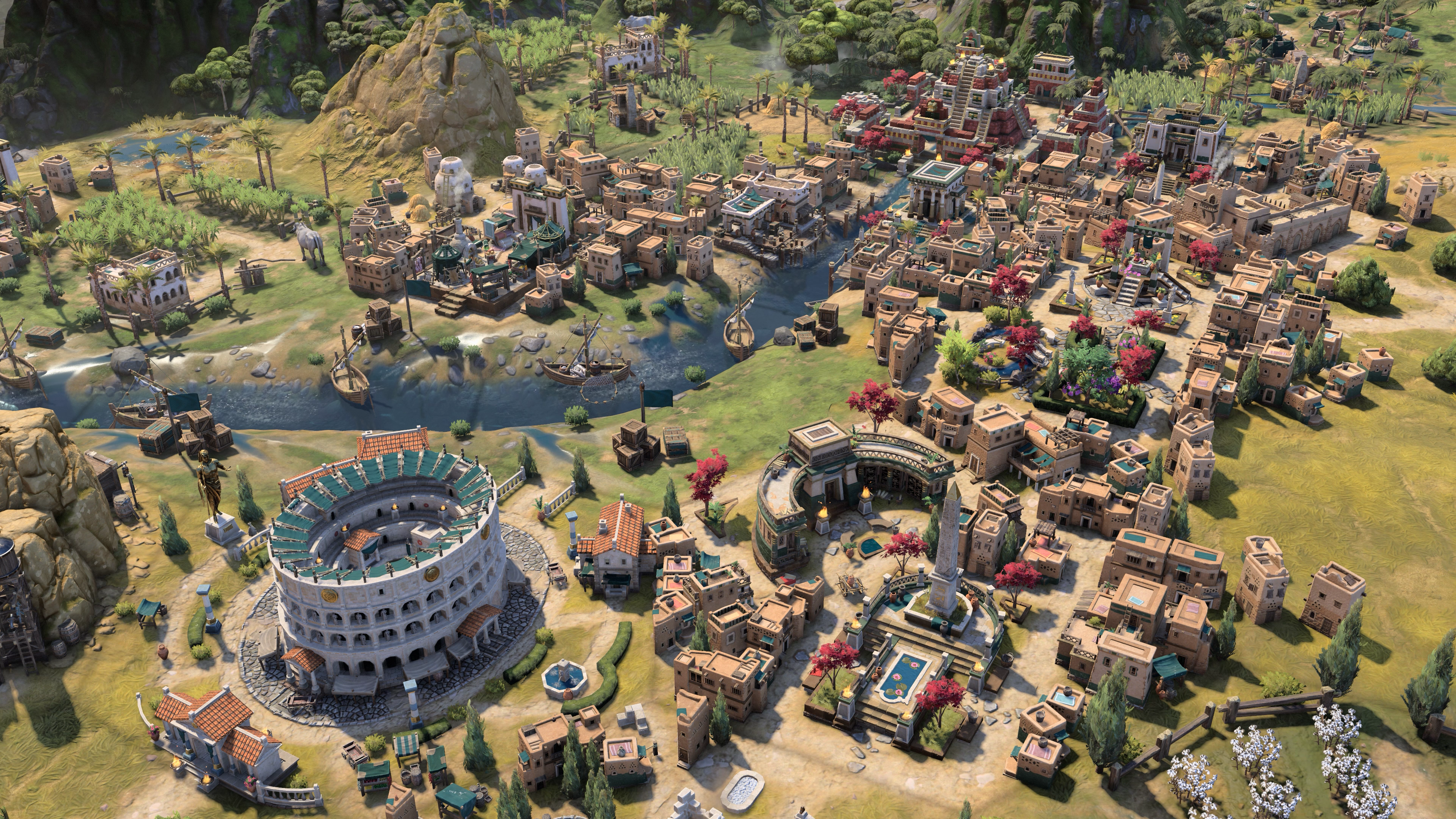
“One More Turn” gets one more chance with Sid Meier’s Civilization VII, the latest chapter in the long-running strategy game series that’s addicted more people and tested more marriages than pretty much anything else on the market.
For 33 years, there have been few gaming thrills greater than founding a tiny, prehistoric village; transforming it into a globe-spanning empire (by military might, scientific advancement, cultural saturation, or any other method you can dream of); and then doing it all over again.
Civilization VII continues that tradition while also boasting a lot of little changes in graphics, gameplay, and everything else that make it feel different from everything that’s come before.
Guess your age
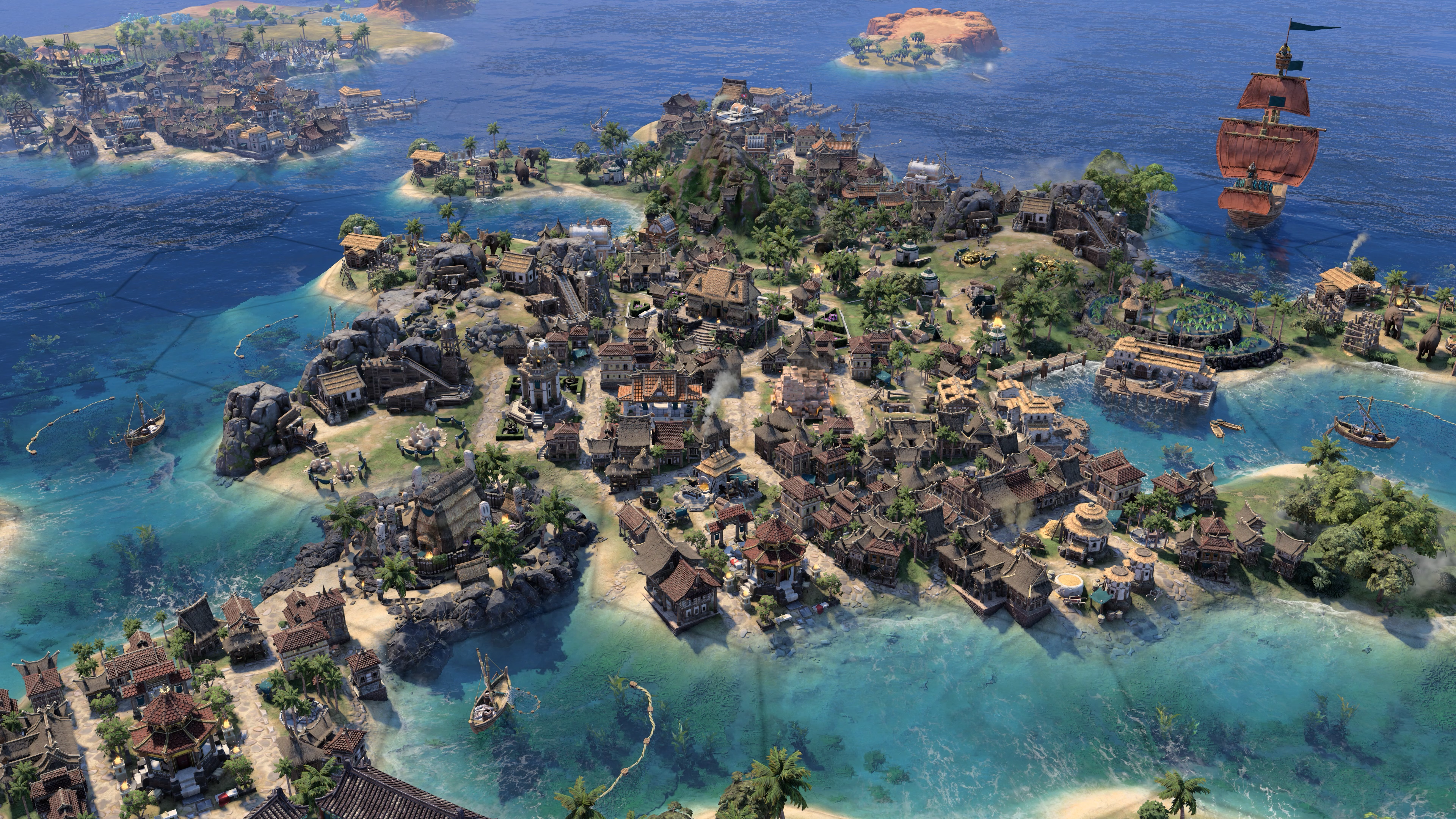
Perhaps the biggest change to Civilization VII compared with its predecessors is that your rule over your empire is no longer a single, continuous stretch of time. The game has now been divided into sections, or “Ages,” that inspire you to constantly reassess your tactics and layer different approaches onto your play.
Although you may start with any Age, the game’s chronology begins with the Age of Antiquity. Here, you will create your cities; forge alliances (and make enemies) with competing civilizations and other independent powers; and develop the arsenals, structures, and science that will provide the foundation of your faction. Following this is the Age of Exploration, where you’ll use massive ships to navigate the oceans and colonize (or conquer) the lands on the other side.

This mechanic was where I realized that many of the strategies I’ve been honing for decades would no longer work. Each Age has built-in limitations; you can only discover so many technologies and build so many cities. This means that you’re unlikely to be exploring much before the Age of Exploration, which is a far cry from previous games, where exploration and conquest were intertwined from the beginning.
Though cities, improvements, and relationships carry over, you’ll have to relearn a lot when transitioning between Ages. Each one is like a new chapter in a book that starts after a time break, beginning with exposition (here’s what you’re doing) and ending with a cliffhanger (in Antiquity and Exploration, at least, a crisis that pushes your organizational and governing abilities — and occasionally your patience — to the limits). Coming to terms with how units and technologies evolve creates a learning curve not present in the other games’ single-span approach.
Separating civs and leaders
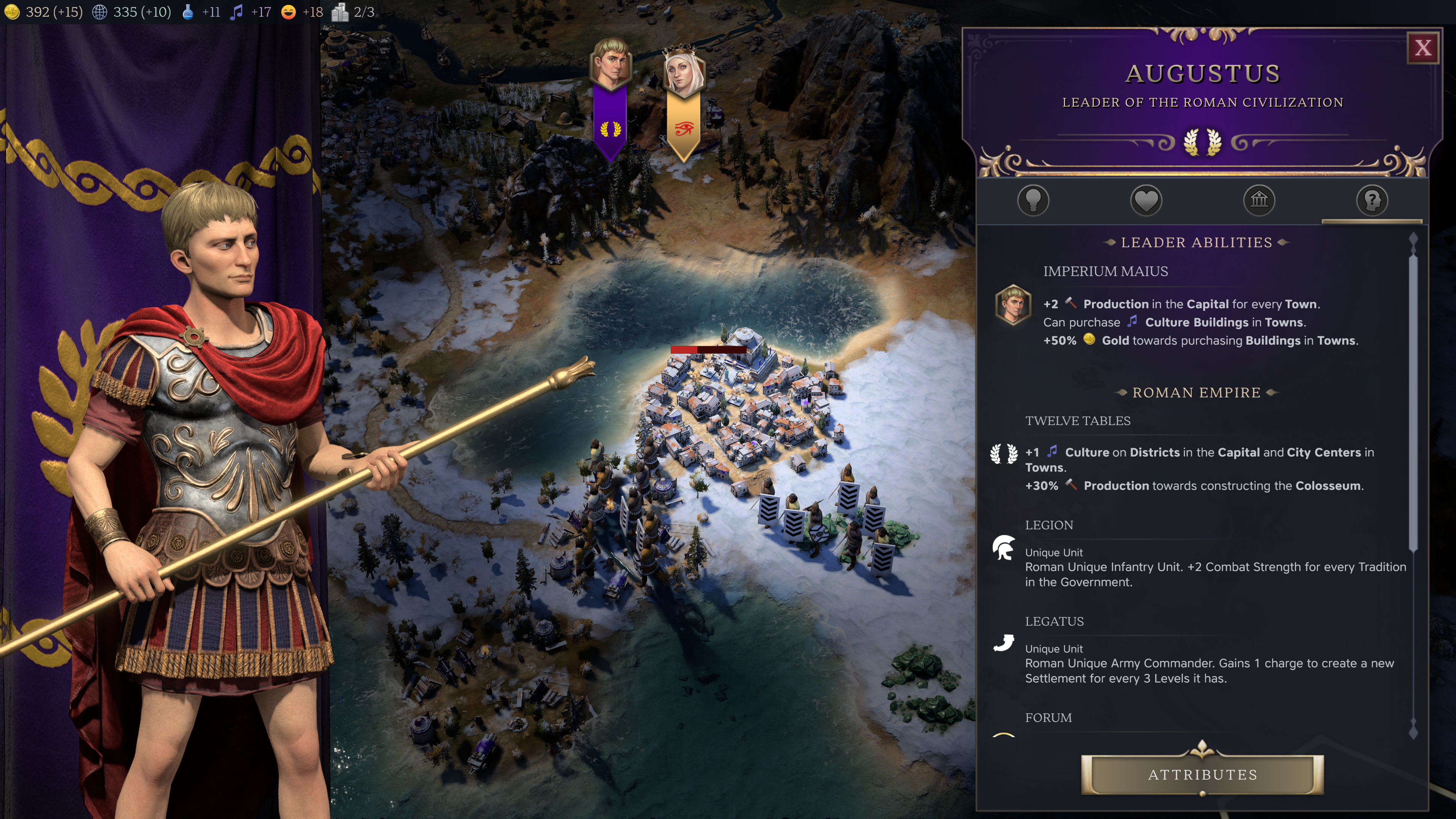
The unique union between leaders and their civilizations has also been completely rethought in Civilization VII, in ways that alternately intrigue and confuse.
Not everyone here was a head of state; Benjamin Franklin and Harriet Tubman are the default American representatives. And whereas in earlier Civilization titles, Caesar would always run Rome or Gandhi would always lead India, now that’s no longer the case. Say you choose Catherine the Great because you want to pursue a cultural victory. You can put her in charge of any of ten different civilizations, each with its own unique benefits. Maybe she makes more sense with Greece’s Culture and Influence powers, but nothing is stopping you from making her Queen of Egypt or Persia.
Why not Russia? Ostensibly, because the real Catherine’s Russia didn’t exist at the dawn of humankind; it had to develop over millennia. To represent this, each change of Age also now forces a change of civilization, so Catherine the Great of Greece in the Age of Antiquity may develop to the point where she leads the Chola, the Normans, the Spanish, or perhaps others (if you unlock them through your actions) once the Age of Exploration hits. Can you blend the present and past advantageously? It’s tricky, but if you can’t, don’t expect to win.
Urban blight
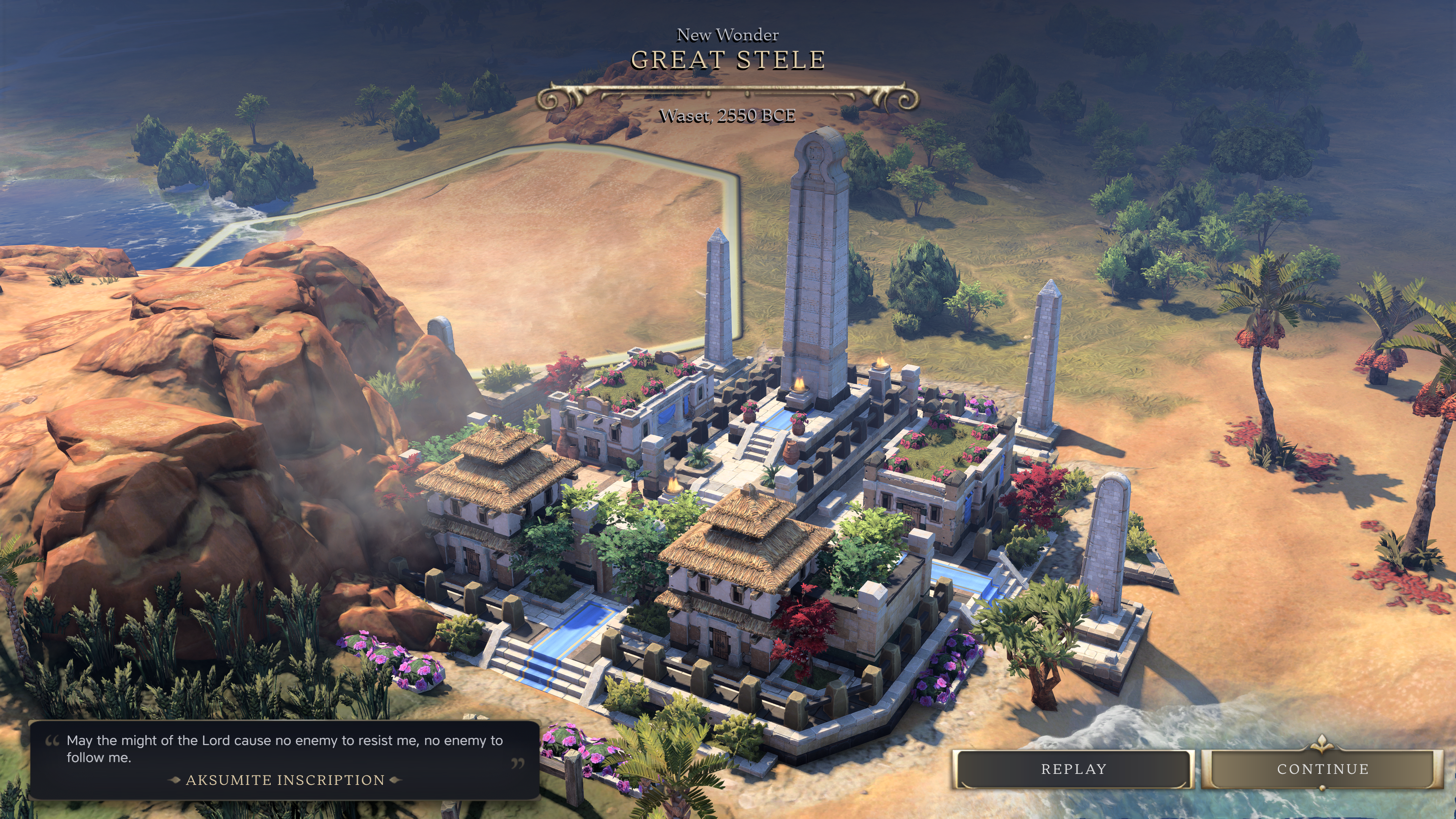
This interaction of the old and new also rears its head with the tiles on which you construct your buildings, put your citizens to work, and draw resources. Because there’s only a limited amount of space in each, and it becomes increasingly difficult to create more as the game unfolds, you may have to discover what happens when you build your bright and shiny bazaar over that ancient altar in your capital city.
You’ll need to balance farming with development here, as in other Civilization games, but VII makes much starker the divide between rural and urban areas: The former house tile improvements (such as farms, mines, and fishing boats), and the latter are what your rural tiles become when you start building there. You don’t want all of one or the other, and getting the mixture just right is a new challenge. However, even that has an unexpected upside: No one can convert any individual settlement to another religion unless they get both the urban and rural populations — something that’s harder than it may sound.
But wait, there’s more
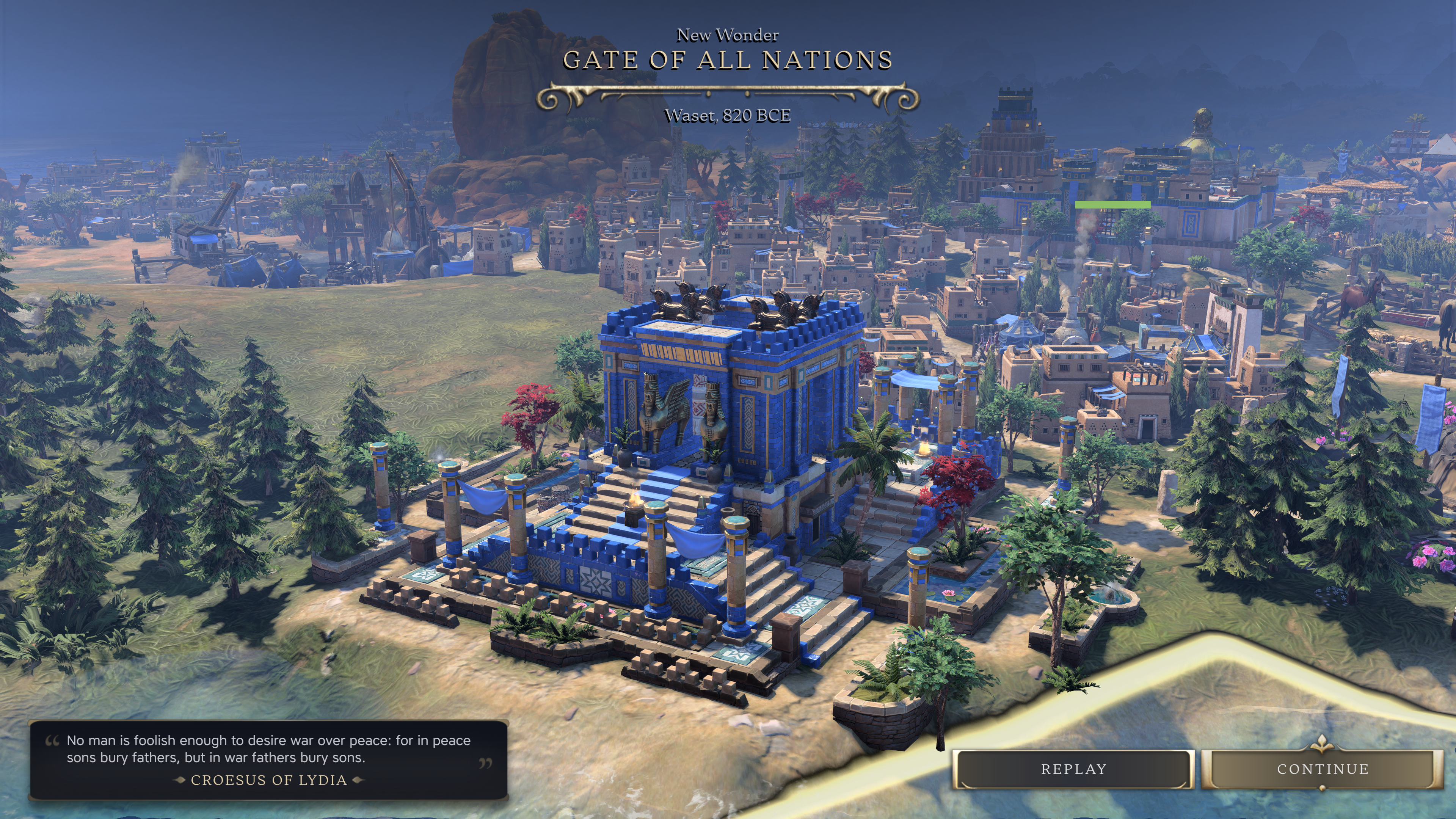
Religious combat and conversion have been rethought and tightened. Natural disasters (from Civilization VI: Gathering Storm) are now a fact of life you’ll have to factor in. Different governments confer more targeted and fewer sweeping advantages than before. You can now master items in the tech tree by researching them multiple times. There are no more builders; all their functions occur automatically. Legacy paths are quests that aid you in particularizing your play. Diplomacy requires a currency called Influence, and more supportive and destructive options are introduced far earlier.
All this means that Civilization VII lives up to its title by being both wholly familiar and entirely new, referencing the past while not being afraid to rethink it. We’ll dig deeper soon enough, but until then, I’ll be stealing as many “one More Turn”s as possible.
This preview is based on approximately 16 hours of play on a build supplied by developer Firaxis Games and 2K. A full, scored review of Civilization VII will follow on February 3, 2025.
More from Tom's Guide
- The best gaming PCs in 2025
- I’m finally giving handheld gaming PCs a chance this year
- This RTX 4070 desktop is currently discounted $600
Get instant access to breaking news, the hottest reviews, great deals and helpful tips.
Matthew Murray is the head of testing for Future, coordinating and conducting product testing at Tom’s Guide and other Future publications. He has previously covered technology and performance arts for multiple publications, edited numerous books, and worked as a theatre critic for more than 16 years.











